The Potential of Functional Fibers to Help Create a Sustainable Society
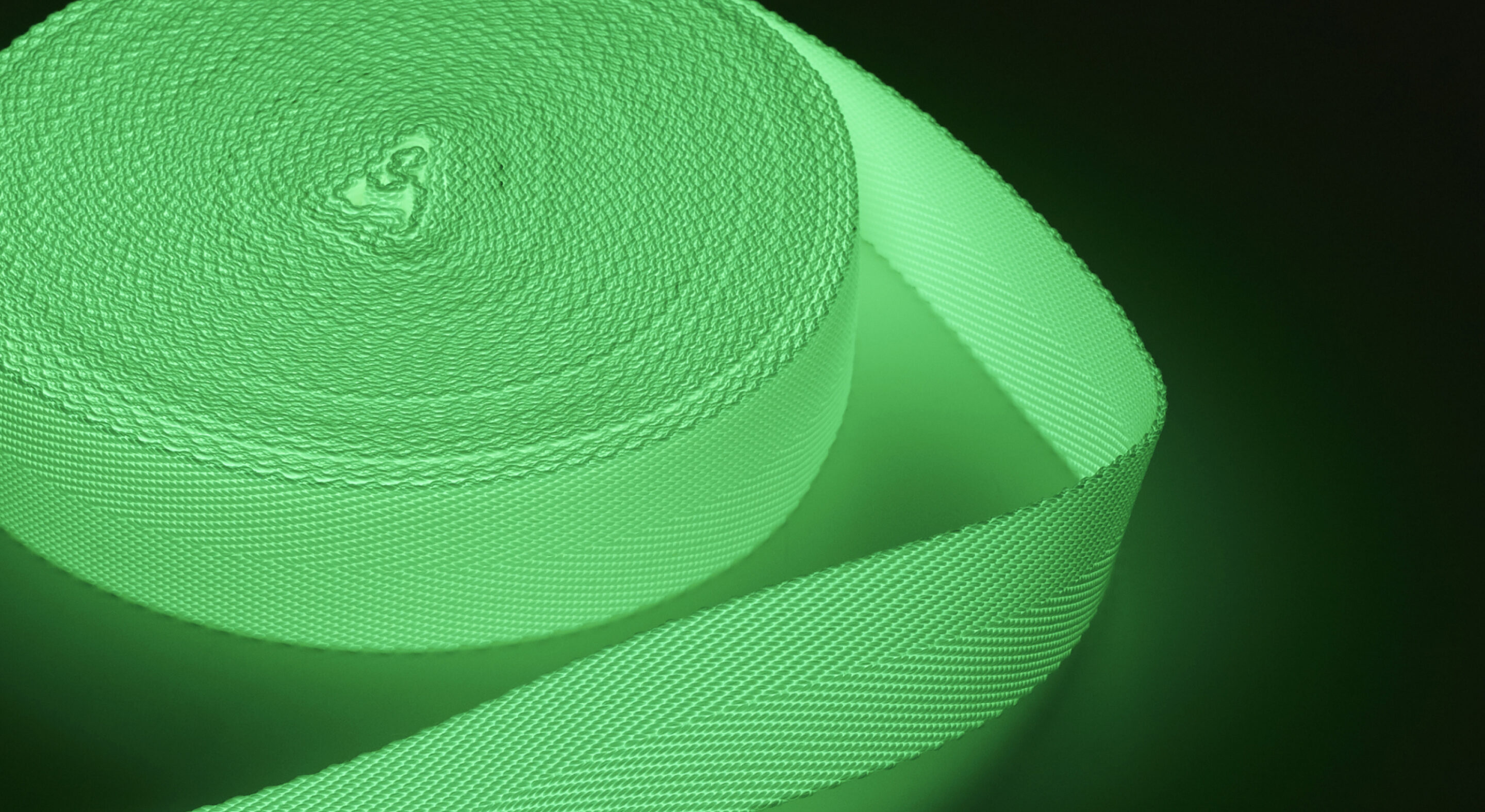
The SDGs are currently the focus of attention. Functional Fibers from the Fujibo Group, which is working to help create a sustainable society. Today, the development members talked about the background of the development and their current efforts.
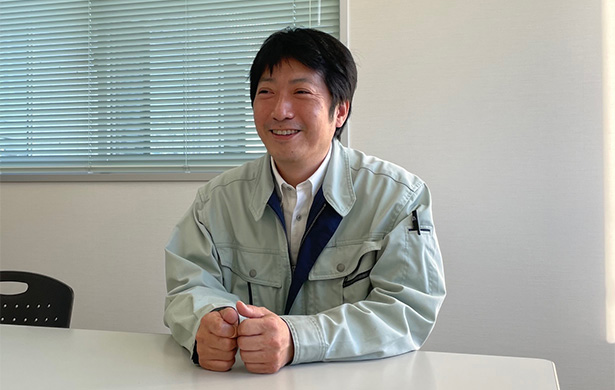
Mr. Matsumoto (hereinafter "Matsumoto")
Fujibo Textile, Inc.
Factory Manager, Kozakai Factory
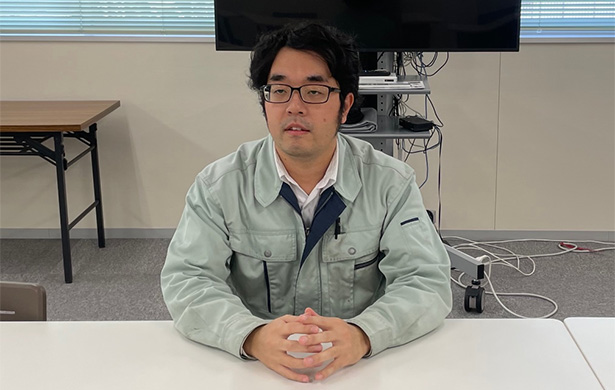
Mr. Shimizu (hereinafter "Shimizu")
Fujibo Textile, Inc.
Synthetic Fiber Production Section, Kozakai Factory
Development Process of Functional Fibers
- Firstly, could you tell us how the synthetic fiber production section was established?
Matsumoto:The Kozakai Factory, where the synthetic fiber production section is located, started its operation in 1951. After spinning cotton and wool, we developed synthetic fibers such as spandex, an elastic fiber that stretches and contracts. It all started when our research department was working on various prototypes for one of our customers, and we decided to work on melt spinning as an advanced form of spinning. That was about three to four decades ago. Currently, the synthetic fiber production section is engaged in the manufacture of custom-made yarns by kneading special materials into yarns based on customer requests using melt spinning technology, and the development, manufacture, and sale of yarns with Fujibo's unique functionality such as "JOINER" and "Lumifilo".
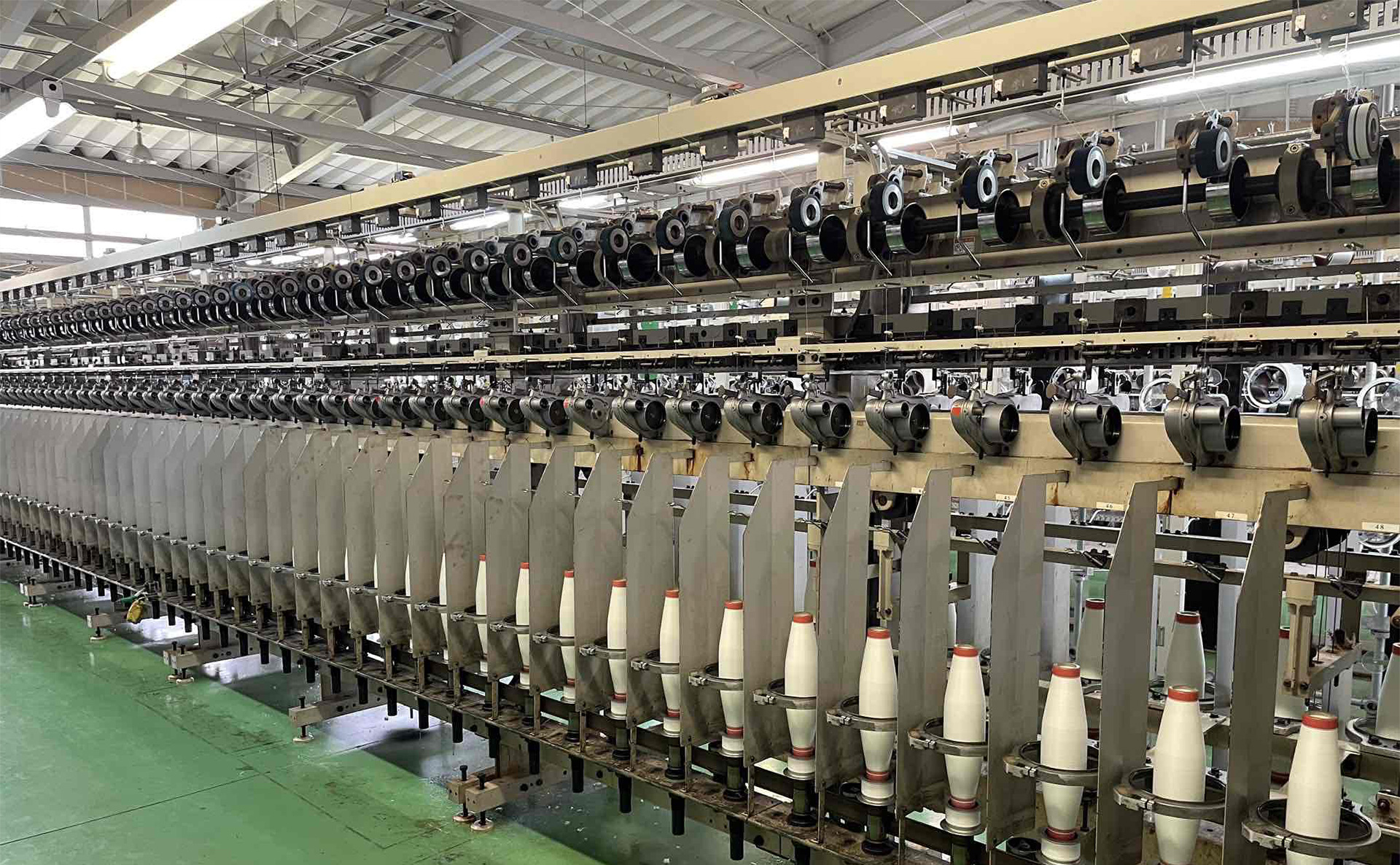
Kozakai Factory: Began operations in 1951.
- What is melt spinning?
Matsumoto: Melt spinning is one of the ways to make synthetic fibers. The method in which resin is melted and ejected through a narrow hole to form a thread or yarn is called melt spinning.
In the beginning, we made polyester and nylon yarns like those made by the major companies, but the cost of the raw materials was higher, so it was difficult to make a profit. That's when we decided to create original products for each customer by kneading in functional materials, ceramic and other special materials that the customer had.
- So, rather than making fabrics and products from yarn, you are pursuing what you can do with the yarn itself in this day and age?
Matsumoto: That's right. We started with the idea of changing the type of yarn.
- What kind of products did you make at first?
Matsumoto: Fluorocarbon resin. We made fluorocarbon resin into yarn, and then proceeded to commercialize it while communicating with customers. Since then, customers have been asking us to make fibers with functional materials in them, and we have been turning them into yarn and cotton. We get requests from customers every month, and we try new materials every time.
Product line with various functions
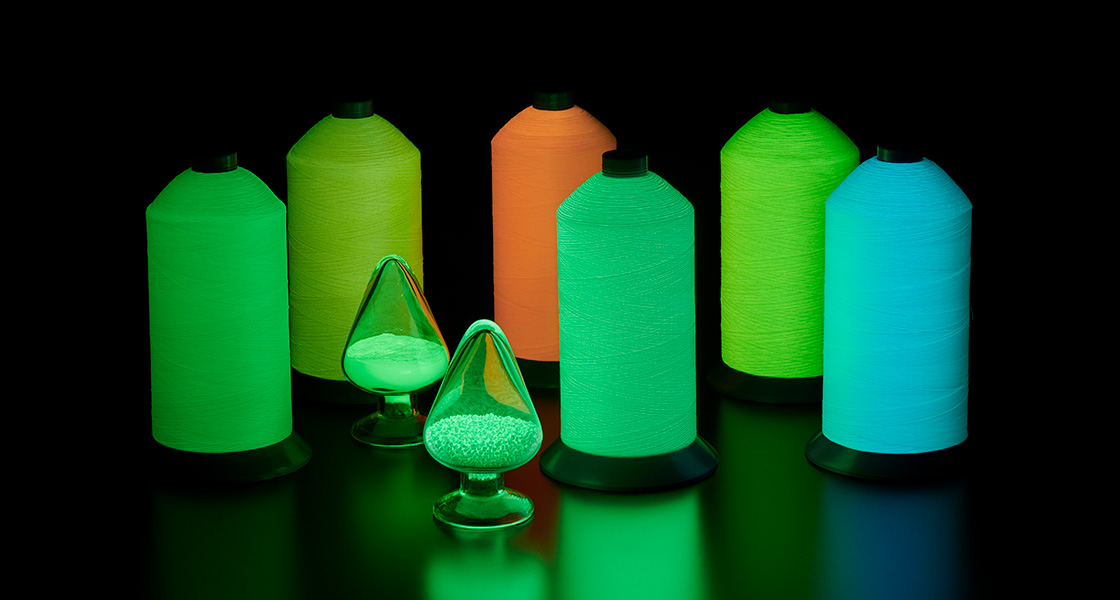
- How did you develop original products such as JOINER and Lumifilo?
Matsumoto: JOINER is a yarn that melts and bonds fibers together when heated above a certain temperature, and we started it about 30 years ago. We made it into yarn upon customer's request, but decided to handle it as our own product because it appeared to be a need for a product with a different application using this resin.
- Do you use the similar concept to commercialize other original products?
Matsumoto: Yes. Basically, we manufacture products on a build-to-order basis, based on customers' requests. However, if we think that the performance of the resin can be applied to other products, we treat it as an original product. We use these two patterns as the pillars of our development, manufacturing and sales. Our style is not "product out" (developing products based on our own policies and what we want to make), but "market in" (developing products based on the needs of our customers).
- What kind of industries do you receive inquiries from, asking you to make special yarn?
Matsumoto: Since the beginning of the development, we have received a lot of inquiries from raw material manufacturers. We have been making prototypes together with them because they want to expand the applications of materials that have been used only for molded products and films, or they want to enter the fiber field in the future.
- Are there any themes for which you are currently receiving a lot of inquiries from customers, or any functions you are focusing on?
Matsumoto: Currently, we are focusing on three themes: recycling, energy saving, and resilience. All of them are directly related to the themes that various companies are working on to realize the SDGs advocated by the United Nations, and we would like to help companies that aim to build a sustainable society and contribute to it through product development.
With regards to recycling, we have been trying to knead various materials into yarn. For instance, a while ago, a university professor asked me about using "lignin" as a thread.
- What is lignin?
Matsumoto: It is one of the components of wood. Cellulose can be used to make paper and other products, but there is a residue of lignin, so we were asked if we could make yarn from it. When he saw the trial yarn, he was happy to take it home with him, saying, "Now I have a sample!"
We also tried using scallop shells. After eating the scallops, they would become waste. We often get inquiries about things that, if left as they are, would just be thrown away.
- Other than scallop shells, what other waste materials do you use for making yarn?
Matsumoto: We have kneaded charcoal made from plant waste into fiber, but that was just a prototype. We are also working on making products using recycled materials. Contributing to the circular economy is an important issue for any company today.
- It must be difficult to make yarn from completely different raw materials, but how do you do it?
Matsumoto: If you increase the ratio of the material too much, the yarn will break. Therefore, we have developed a core sheath composite structure, in which the core contains a high concentration of functional materials and the sheath retains fiber strength, or we use functional material particles that have been classified and refined.
- Thank you very much. What are the products developed by the synthetic fiber production section that are currently attracting the most attention?
Matsumoto: "Lumifilo". This product has a phosphorescent material kneaded into it, and emits light in the dark.
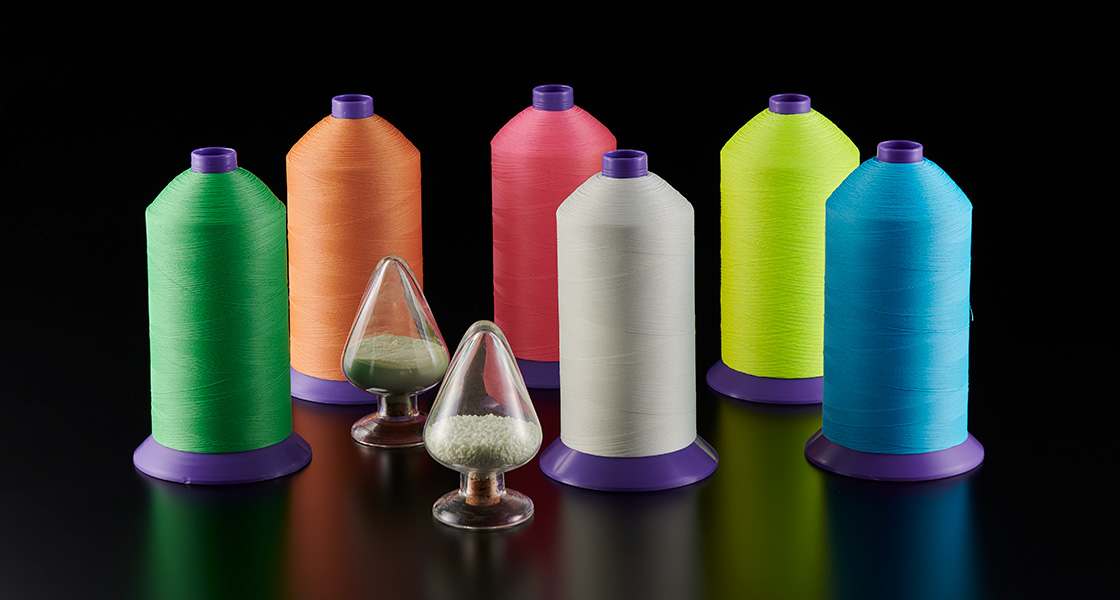
Lumifilo (luminous fiber) - in bright light

Lumifilo (luminous fiber) - in the dark
- What efforts do you put in to make it brighter?
Shimizu: We have gone through various trials such as changing the size of the particles used as the pigment material, changing the concentration, and changing the resin material. The challenge is how to make the light brighter and to make it glow even at night.
Originally Lumifilo was used for embroidery thread and other items with fashion and design features for the apparel industry, but now the range of applications for this thread is expanding, and we are receiving many inquiries mainly from applications for materials. We are proud to say that our products are outstanding, among similar products in the market.
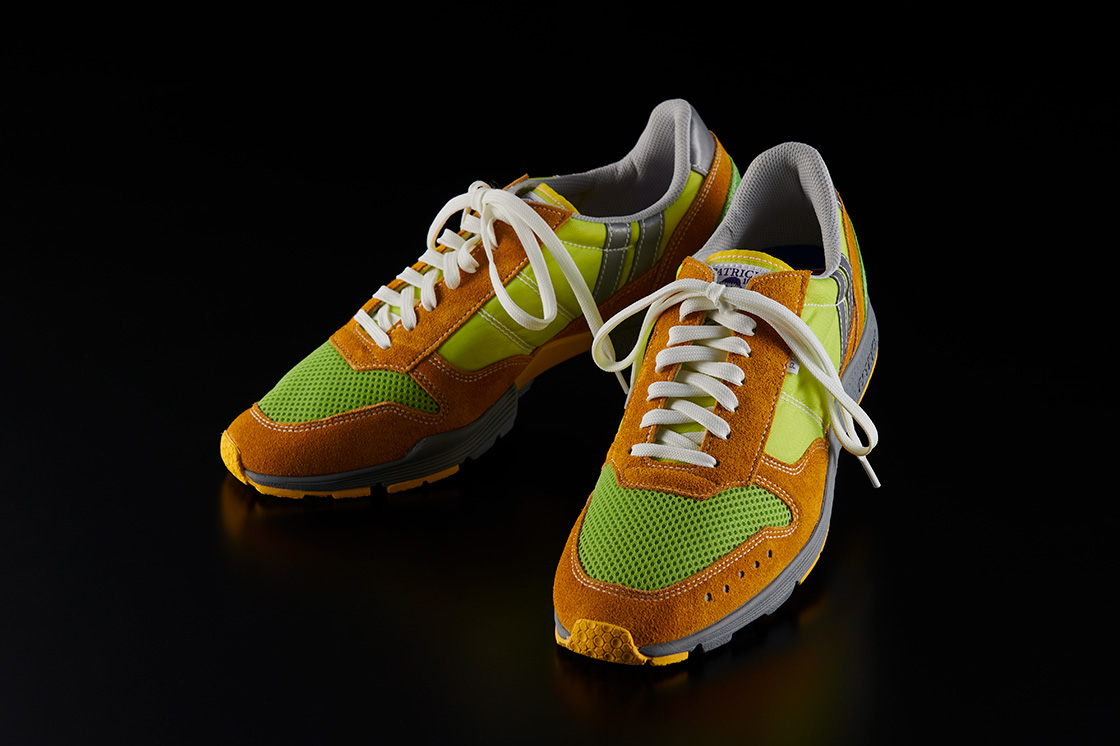
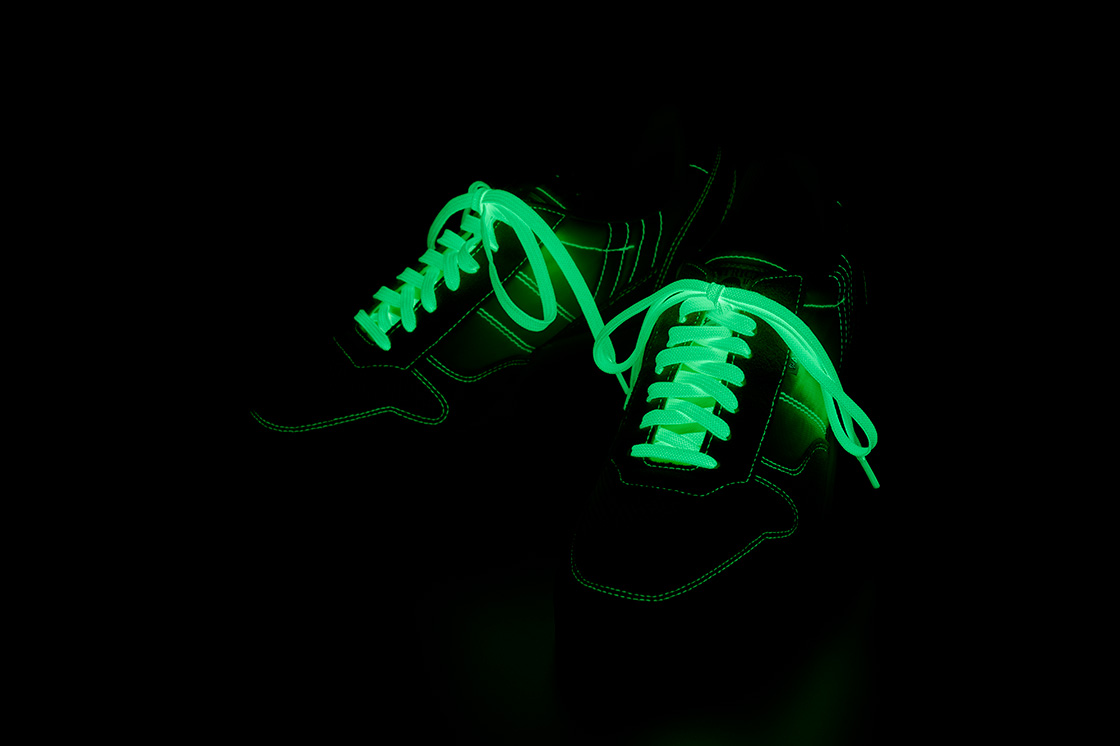
The Potential of Functional Fibers to Help Create a Sustainable Society
- What kind of applications does it have for the materials?
Shimizu: For example, tent ropes. You know, we often set up many tents in the mountains during festivals. We light them up so that they can see where they are passing in the dark, or so that they don't fall down and catch their feet on the tent.
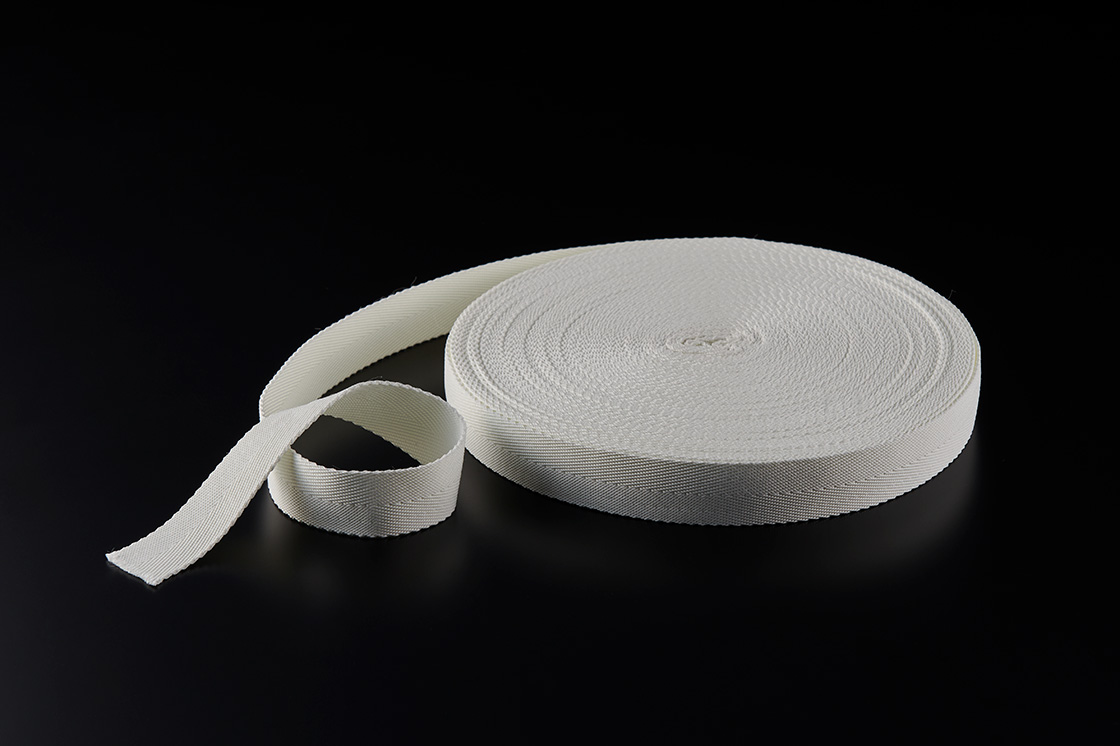
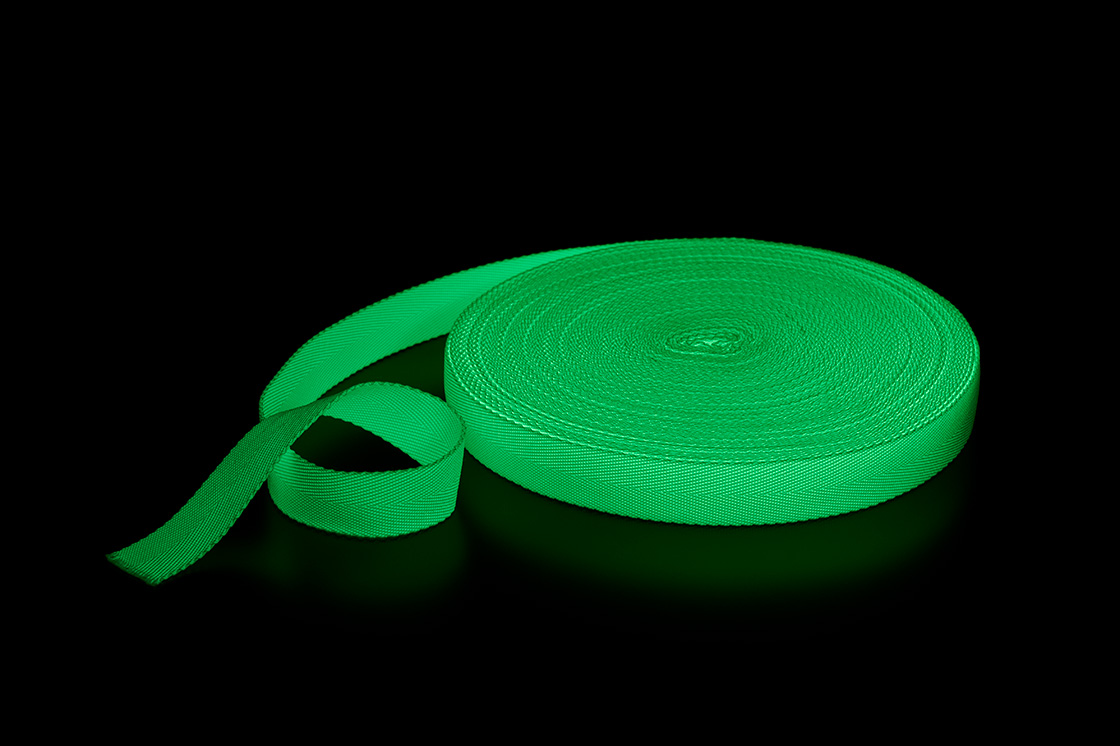
- So, safety is a must.
Shimizu: Exactly. One of the practical examples is a fire hose. After a fire truck puts out a fire, it goes dark and people can't find their way home. So we put phosphorescent thread in the hose and make it glow to show the exit route.
- People can follow the end of the hose to come back. It's a useful initiative.
What other applications can you think of for the thread that contains phosphorescent materials?
Shimizu: Interior materials for the housing for elderly people. We believe that by illuminating the stairs and hallways when we wake up at night, we can prevent people from falling or bumping into each other and getting injured.
- It seems to be useful in the event of a disaster such as a power outage.
Shimizu: Yes. Nowadays, phosphorescent materials are also used for subway arrows, and I think we can use thread for something as well. Also, pet leashes might be a good idea. At night, it can be dangerous if you can't see the leash.
- So, there are possible applications in the welfare and pet industries.
Shimizu: Yes. There is another product called "Solefilo", which has the property of increasing temperature when irradiated with near-infrared rays. We are currently promoting it, mainly for outerwear, but we think it could be an energy-saving product for agriculture and other applications. Also, the UV Magic is the yarn that instantly changes color when exposed to UV light. We expect that it could be applied not only for fashion purposes but also for product identification.
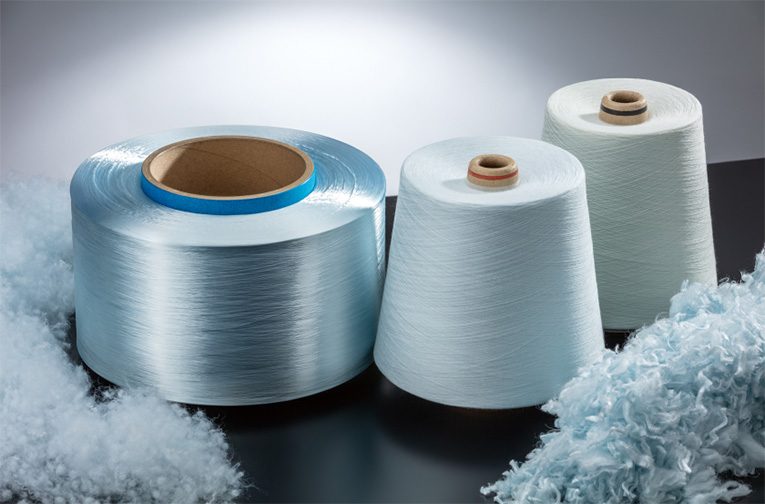
Solefilo - Infrared Absorption Heating Yarn
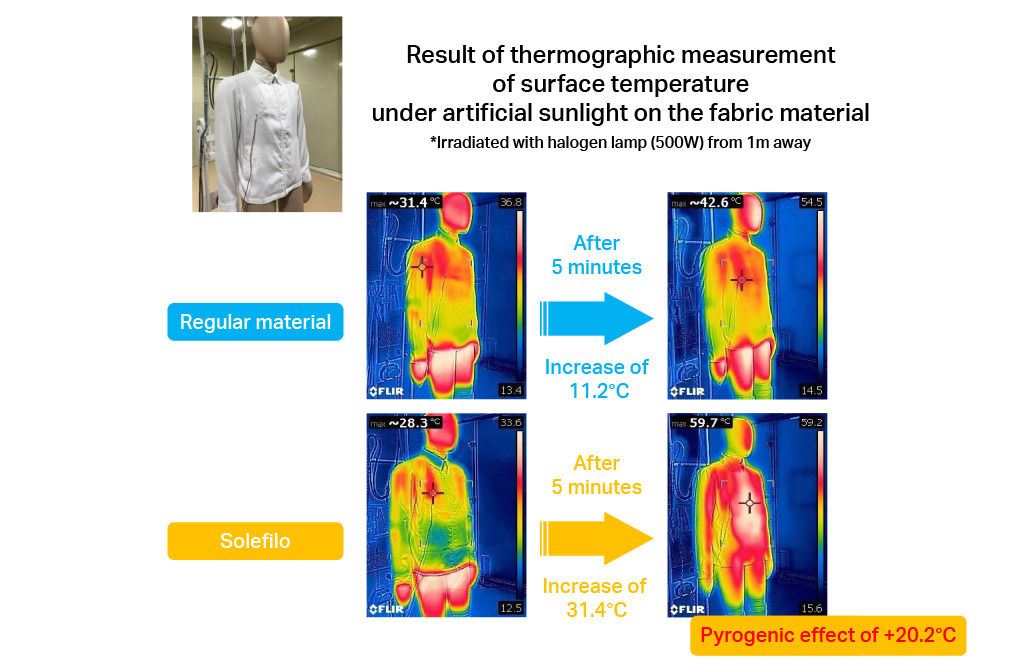
Solefilo - Surface temperature measurement results by thermography
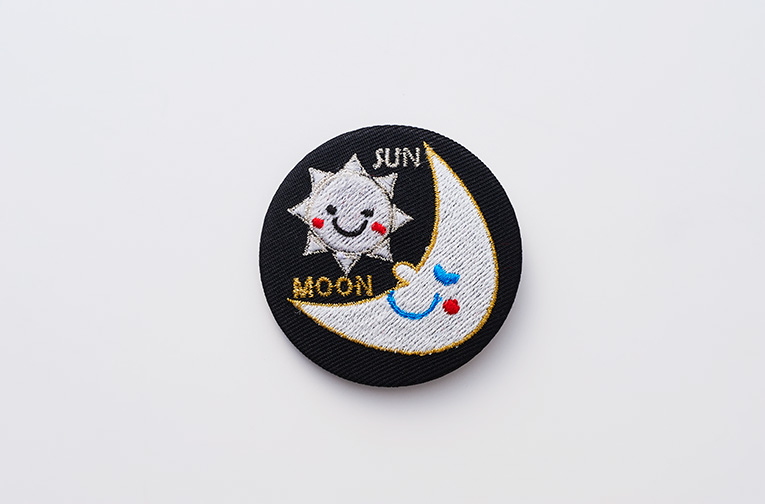
UV Magic - Condition that UV light do not hit on the yarn (The part of sun is white)
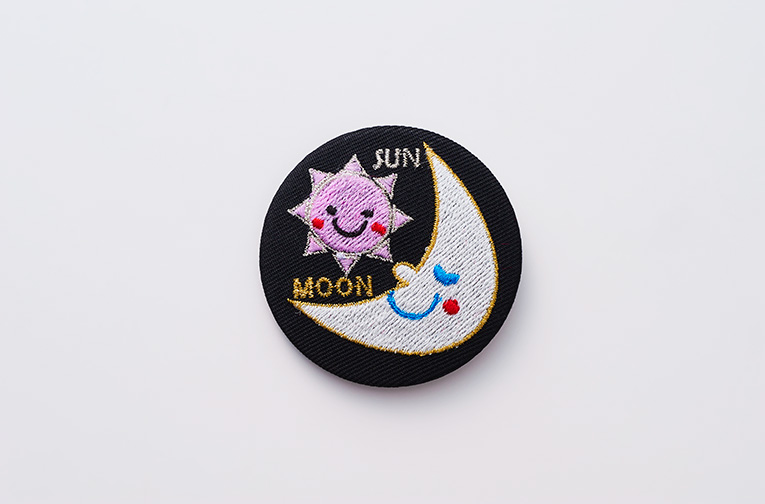
UV Magic - Condition that UV light hit on the yarn (The color of sun is changed)
- Yarn has a strong image of apparel, but it can be developed in many ways depending on your ideas.
Shimizu: Yes. With Fujibo, it is possible to make fibers from a variety of special materials. We can respond quickly and in small quantities.
- If you are interested in our services, please feel free to contact us. Thank you very much for your time today.